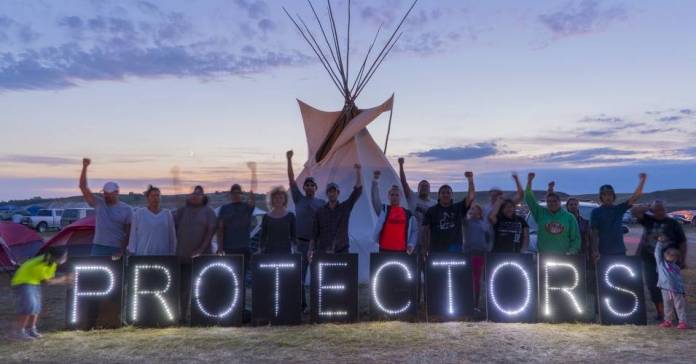While oil started flowing through Line 3 pipeline on Friday, resistance to the pipeline will continue. Water protectors vow to keep fighting for climate justice as a challenge to the Army Corps of Engineers’ decision to issue a key water-crossing permit for the pipeline is still pending in federal court.
The owners of the pipeline, Canada-based Enbridge Energy, also face a $3.3 million fine issued by the Minnesota Department of Natural Resources for “damaging a sensitive aquifer during pipeline construction back in January,” according to Gizmodo, along with multiple ongoing challenges to the pipeline’s permits in tribal courts.
“This is not the outcome we hoped for, but the fight to stop Line 3 has always been a fight for climate justice and a future free from fossil fuels, and that fight will not stop just because Enbridge has succeeded in building this pipeline,” Margaret Levin, director of Sierra Club North Star Chapter, said. “Our movement is powerful, and we are not going anywhere. We will keep pushing forward—demanding that our elected leaders live up to their promises and lifting our voices for healthy and safe communities and climate justice.”
Line 3 pipeline will “carry 760,000 barrels per day of the dirtiest oil on the planet from Alberta, Canada to Superior, Wisconsin, running through more than 200 bodies of water along the way, including the headwaters of the Mississippi River and lakes in northern Minnesota where Native Americans harvest wild rice and hold treaty rights,” reported Sierra Club. The oil transported through the pipeline is said to be the “dirtiest” because it releases 17 percent more carbon dioxide emissions than standard crude oil.
“Enbridge has raced to build this line before the federal court has passed judgment on our appeals about the line, but the people have: We believe the most expensive tar sands oil pipeline ever built in the U.S. will be the last,” Winona LaDuke, executive director of Honor the Earth and one of the central figures standing against the pipeline, said.
While Enbridge Energy said Line 3 should reach its maximum capacity of 760,000 barrels of tar sands per day later this month, resistors of the pipeline are determined to find ways to make sure this doesn’t happen.
“There’s still a lot of questions unresolved,” Moneen Naismith, an attorney for Earthjustice who is involved in the federal court case, said. “This is not smooth sailing for the pipeline by any stretch of the imagination. And this is not the first pipeline that has done this—this is what Dakota Access did. They do not let any legal challenges get in the way of letting them make money off this pipeline.”
 RSS Feed
RSS Feed















 October 3rd, 2021
October 3rd, 2021  Awake Goy
Awake Goy 

 Posted in
Posted in  Tags:
Tags: 













